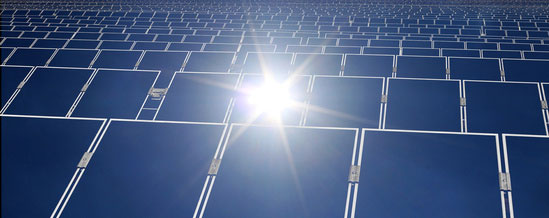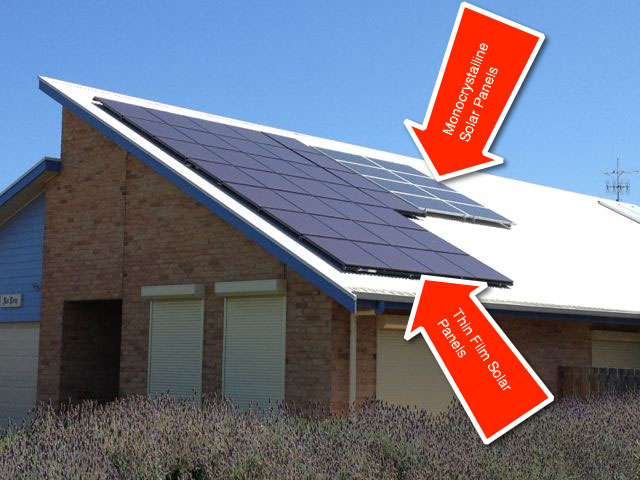Thin Film Solar Panels
Thin film is a generic term for photovoltaic solar panels made from one on these materials:
- Amorphous Silicon (a-Si)
- Cadmium Telluride (CdTe)
- Copper Indium Selenide (CIGS)
Thin film solar panels only have a small share of the solar panel market. They are most commonly used for large solar farms, and pretty rare in residential solar installations.
Thin film technology was developed in an effort to make solar panels at a lower cost after prices for the silicon used to make mono and multicrystalline panels skyrocketed. However, silicon then became dirt-cheap, so many of the business cases for thin film solar panels began looking a bit flimsy.
I wrote a blog post in 2011 explaining why I’m not a huge fan of these modules for residential applications, but they do have some advantages.
The Advantages of thin film solar panels:
- Their power output is less affected by high temperatures
- They use less materials in manufacturing
- They can look very “clean”, and can be bent into all sorts of cool looking shapes.
- They work well in low light conditions.
- If you partially shade a module its power will reduce less than a crystalline panel would.
The disadvantages of thin film solar panels:
- Lower efficiency compared to crystalline solar panels (so they take up more space on your roof).
- Can take 6 months to a year on your roof before the output stabilizes
- Takes longer to install and uses more racking.
- They use a more toxic manufacturing process.
Here’s an example of a house I spotted with both a Thin film array (LHS) and a monocrystalline array (RHS) some years ago. Despite the thin film solar panels taking up 3 times the space, they only produced 23% more power than the tiny monocrystalline array on the right:
While thin-film PV technology has seen conversion efficiencies improve since; so too have those of crystalline silicon panels – and they are still very much ahead in this respect.
How thin film solar panels are made
Thin film manufacturers manufacture entire solar panels, instead of individual solar cells that are later assembled into panels. Skipping the assembly step makes for a more efficient process.
To make an amorphous silicon thin film solar panel, silicon is deposited directly onto a backsheet that may be metal, foil, plastic or glass by a technique called chemical vapour deposition. This creates an incredibly thin film of photo-reactive material which solidifies and is then etched with a laser. The laser separates the film into discrete cells and also makes electrical connections between those cells.
If you are considering buying thin film solar panels then you must read this.
Thin film solar panels take 6 months to 1 year to “bed in”. This means that when they first go on your roof, their power output will look really impressive. Typically 20-25% higher than their long-term power output. Make sure that the salesman is quoting your system power output based on the stabilized power output, not the initial power output.

